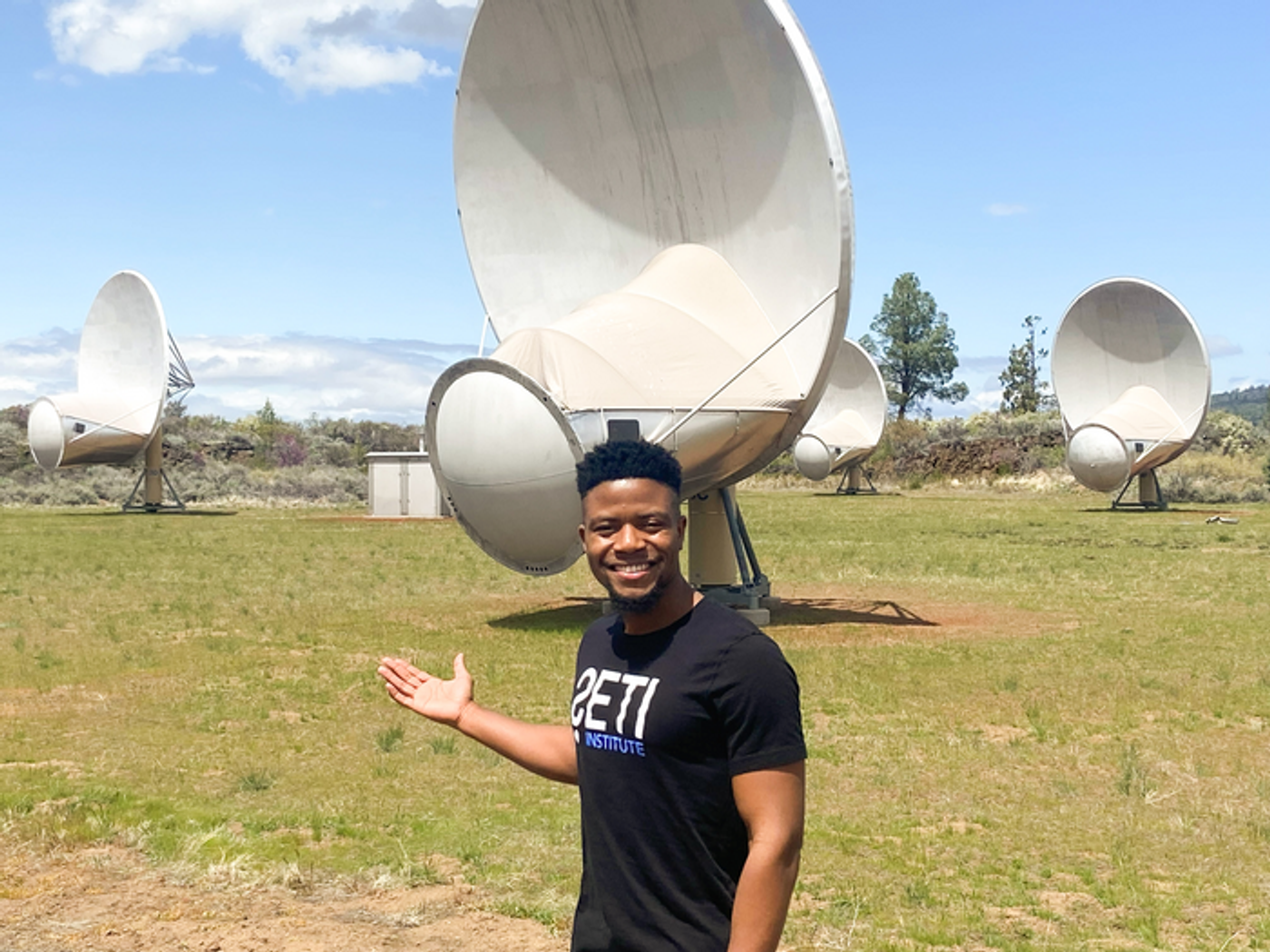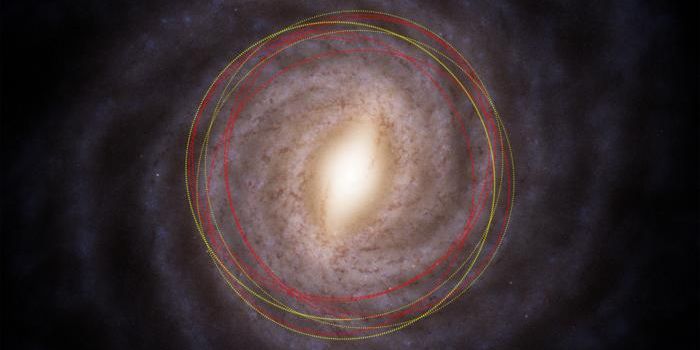Does ET Know We're Here?
Can a nearby extraterrestrial technological civilization detect radio signals from Earth? This question is what an international team of researchers hope to answer in a recent study published in the Monthly Notices of the Royal Astronomical Society.
For the study, the researchers examined if an extraterrestrial technological civilization located a few light years from Earth would be able to detect our radio signals based on our radio signal output, also known as our radio leakage budget. This study holds the potential to help us better understand how our radio signals are being detected in outer space and what steps we need to take to improve our chances of another civilization receiving them, as well.
Study lead author, Ramiro Saide, at the Allen Telescope Array in Hat Creek, California. (Credit: Ramiro Saide)
The study’s lead author is Ramiro Saide, who is a MPhil student at the University of Mauritius in East Africa. For the study, Saide developed models meant to simulate both the radio leakage budget from Earth using current Long Term Evolution (LTE) mobile towers and how much of this leakage a nearby extraterrestrial technological civilization would be able to detect. The three astronomical targets selected for the study were Alpha Centauri A (~4.2 light-years away), Barnard’s Star (~6 light-years away), and HD 94735 (~8.3 light-years away).
The study’s findings demonstrated that the current levels of radio leakage emanating from Earth could not be detected by an extraterrestrial technological civilization that reside within 10 light-years of Earth using radio telescopes on par with the Green Bank Telescope. This not only eliminates the three astronomical locations used in this study, but also that the Earth’s current radio leakage budget might require a technological upgrade, as well.
While the data used for the radio leakage was constrained to LTE, the researchers plan to include data from ground based up-links such as the Deep Space Network, 5G mobile systems, and radar installations, and even satellite constellations such as the SpaceX’s Starlink.
“Current estimates suggest we will have more than one hundred thousand satellites in low Earth orbit and beyond before the end of the decade,” said Dr. Michael Garrett, who is a Sir Bernard Lovell Chair in Astrophysics at the University of Manchester and Director of the Jodrell Bank Center for Astrophysics, and a co-author on the study. “The Earth is already anomalously bright in the radio part of the spectrum; if the trend continues, we could become readily detectable by any advanced civilization with the right technology.”
For now, the only signal detected by Earth as potentially being of extraterrestrial origin is the Wow! Signal, which was heard in 1977 by Jerry Ehman at the Big Ear Radio Telescope of Ohio State University. While this signal was brief, lasting only 72 seconds, it was deemed to be very loud and the data printout pointed to something otherworldly, but not from as astronomical object. While scientists continue to debate its origins to this day, could it be possible that another civilization in the cosmos have their equivalent of the Wow! Signal, only it came from Earth?
What new discoveries will scientists make about outgoing radio signals from Earth and how they can be detected by an extraterrestrial technological civilization in the coming years and decades? Only time will tell, and this is why we science!
Sources: Monthly Notices of the Royal Astronomical Society, SETI Institute, HowStuffWorks
As always, keep doing science & keep looking up!









